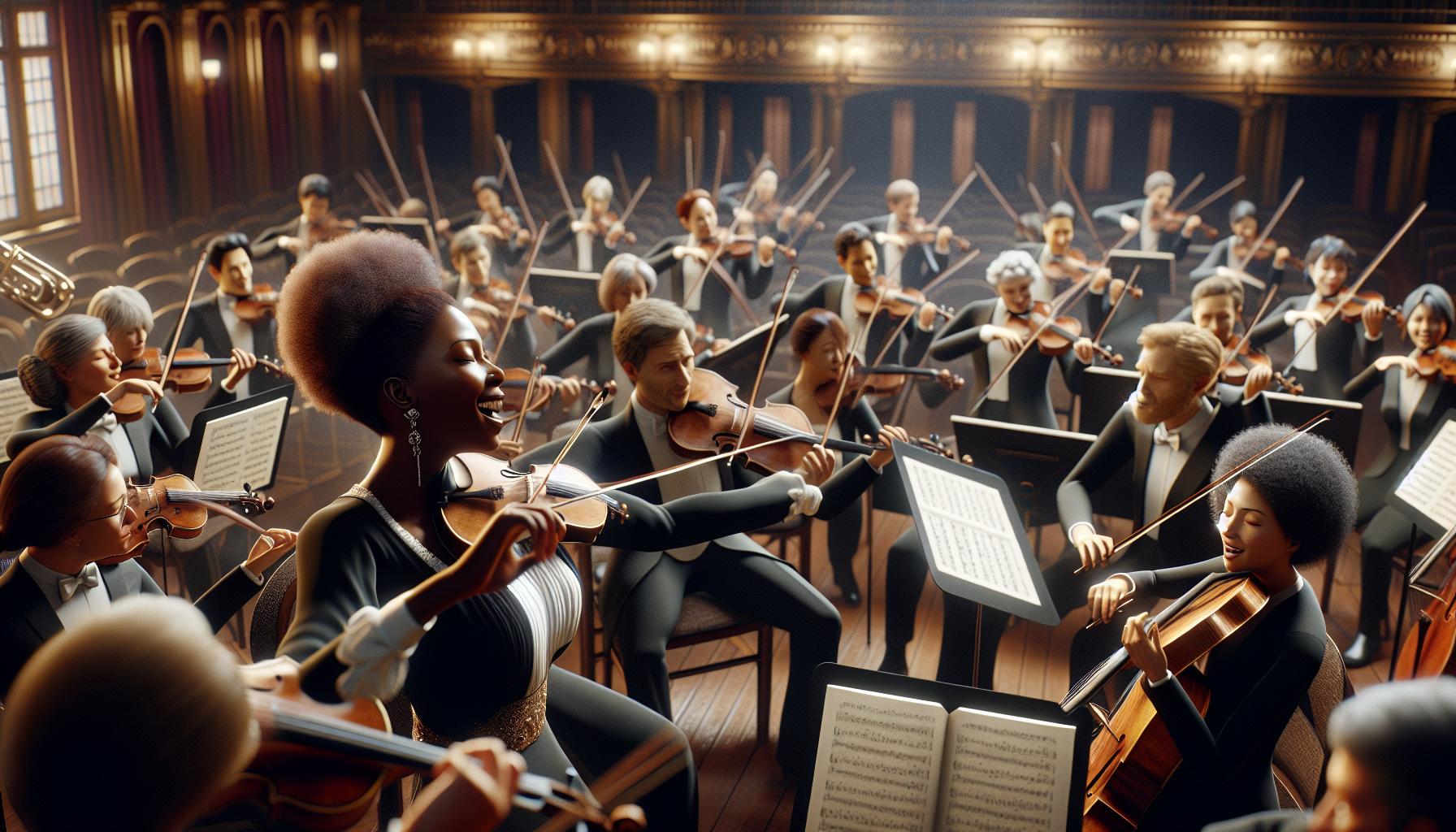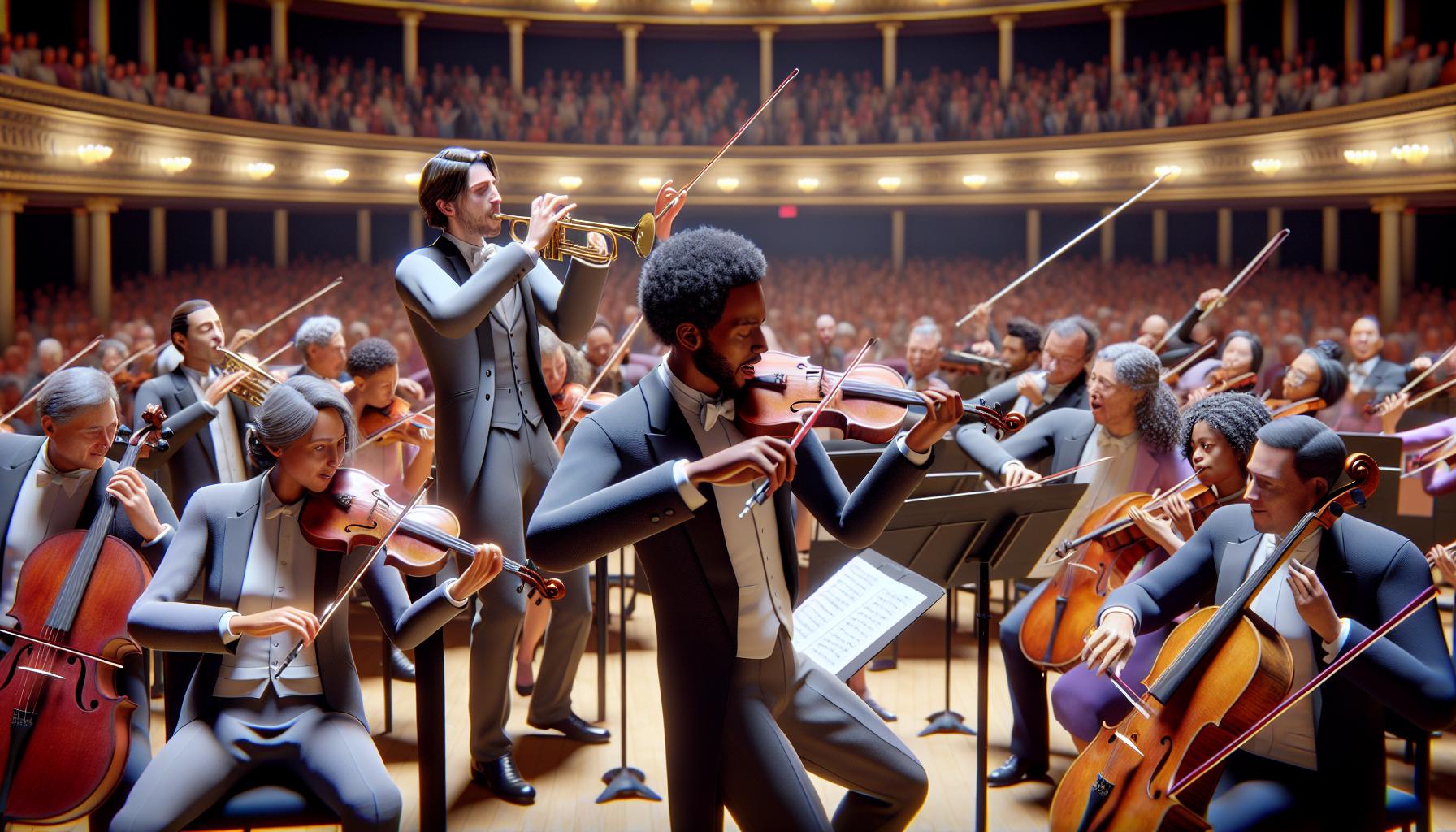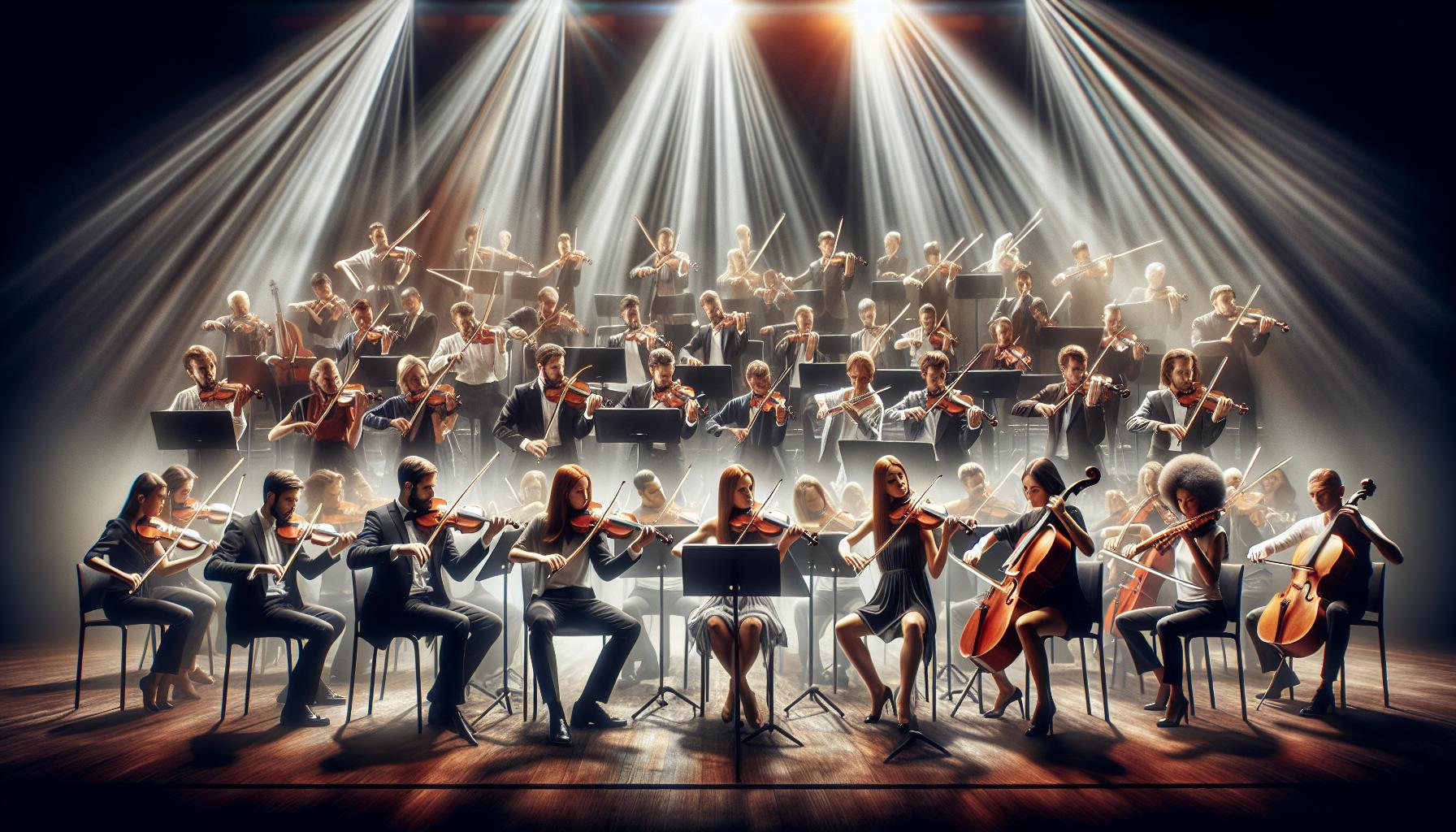In the world of music, terminology plays a crucial role in conveying emotion and tempo. One term that often pops up is “allegro.” This lively word, rooted in Italian, carries a sense of briskness and energy that can transform a composition. Understanding what allegro means not only enriches the listening experience but also enhances performance for musicians.
When a piece is marked allegro, it invites performers to play with enthusiasm and speed, typically at a tempo of around 120 to 168 beats per minute. This vibrant tempo can evoke feelings of joy and excitement, making it a favorite in various musical genres. Whether in classical symphonies or contemporary pieces, allegro serves as a key indicator of the mood and pace, guiding both musicians and audiences through the exhilarating journey of music.
Key Takeaways
- Definition of Allegro: Allegro is a musical term indicating a fast, lively tempo, typically ranging from 120 to 168 beats per minute, and is associated with joy and energy in compositions.
- Emotional Impact: Pieces marked allegro evoke feelings of excitement and exuberance, enhancing both performance and listener experience across various musical genres, from classical to contemporary.
- Historical Significance: The term “allegro” has roots dating back to the 16th century, becoming a key part of musical notation during the Baroque and Classical periods, especially in works by composers like Haydn and Mozart.
- Nuanced Interpretations: Allegro can be modified with additional terms, such as “allegro con brio” (with vigor) or “allegro moderato” (moderately brisk), allowing musicians to convey varying degrees of energy and emotional depth.
- Rhythmic Engagement: The lively nature of allegro encourages rhythmic intricacies, including syncopation and dynamic articulation, which captivate audiences and maintain a spirited atmosphere throughout pieces.
- Application in Various Genres: Allegro transcends classical music, appearing in upbeat pop and rock songs, highlighting its versatility and enduring relevance in diverse musical contexts.
In Music What Does Allegro Mean
Allegro serves as a tempo marking in music, indicating a fast, lively pace. Musicians interpret allegro as a directive to infuse vitality into their performance. Typically, pieces marked allegro are played at a tempo ranging from 120 to 168 beats per minute.
Allegro can vary in its application across genres. In classical compositions, it often brings forth a sense of joy and exuberance. In contemporary music, it may appear in upbeat pop songs and energetic rock tracks. The term distinguishes itself by creating a strong emotional connection, enhancing the audience’s experience.
Allegro often appears in combination with other neoclassical terms, thus modifying its effect. For example, “allegro con brio” signifies a lively tempo with vigor, while “allegro moderato” suggests a slightly more restrained pace. Such nuances enrich the interpretive scope for musicians, allowing for dynamic performances.
Understanding allegro aids musicians in recognizing the required energy, shaping how they convey emotion through their artistry. It fosters a deeper appreciation among listeners, as it elevates the overall enjoyment of a musical piece.
The Origin Of Allegro

“Allegro” has rich historical and linguistic roots that contribute to its current musical significance. Its journey reflects a blend of cultural influences and the evolution of musical terminology.
Historical Context
The term “allegro” traces back to the 16th century, emerging in the context of Baroque music. During this period, composers sought to convey emotion through tempo and expression. The lively nature of allegro became a staple in compositions, allowing musicians to express joy and exuberance. Throughout the Classical era, composers like Haydn and Mozart widely adopted allegro. This usage solidified allegro’s place in musical notation, becoming synonymous with rapid and spirited performances.
Linguistic Roots
“Allegro” originates from the Italian word for “cheerful” or “joyful.” This connection emphasizes the emotional quality associated with the term. Italian musicians and composers popularized the use of such terms to standardize musical performance across regions. The influence of Italian musical language continues to shape tempo markings seen today. The linguistic vitality of “allegro” reflects not only its tempo but also the cultural vibrancy within the music it describes.
Characteristics Of Allegro

Allegro embodies specific traits that define its usage in music. Understanding these characteristics provides insight into its role within various compositions.
Tempo And Rhythm
Allegro features a tempo range typically between 120 and 168 beats per minute. This brisk pace instills energy in compositions and demands rhythmically engaging performances. Musicians often adopt lively syncopation and dynamic articulation within this tempo, enhancing the piece’s overall vibrancy. Allegro can appear as a standalone term or within phrases like “allegro ma non troppo,” indicating a lively pace without excessive speed, adding complexity to the rhythmic interpretation.
Emotional Connotations
Allegro conveys feelings of joy, excitement, and exuberance. The term suggests a bright and cheerful atmosphere, prevalent in celebratory music. This emotional resonance varies across genres; it evokes playful melodies in classical sonatas while energizing upbeat sections in pop and rock music. Phrases like “allegro con brio” amplify this effect by incorporating vigor, while “allegro moderato” moderates the tempo, allowing for reflective moments without losing the underlying spirited quality. These nuanced expressions enrich the emotional experience for both performers and listeners.
Examples Of Allegro In Musical Pieces

Allegro appears in various musical pieces, showcasing its dynamic and spirited qualities across genres. Below are notable examples that illustrate its application in classical and contemporary music.
Classical Examples
- Symphony No. 40 in G Minor by Wolfgang Amadeus Mozart
Allegro is marked in the first movement, characterized by its driving energy and dramatic contrasts. The lively tempo enhances emotional tension, typical of the Classical period’s expressive style. - String Quartet No. 62 in C Major, Op. 76, No. 3 by Joseph Haydn
The opening movement is marked “Allegro.” It exemplifies vibrant themes and rhythmic vitality, showcasing Haydn’s mastery in developing lively motifs throughout the composition. - Violin Concerto in E Minor, Op. 64 by Felix Mendelssohn
The first movement employs an allegro tempo, featuring intricate violin passages that convey both agility and joy. Mendelssohn’s use of syncopation and melodic flourishes illustrates the lively essence of the term.
- “Uptown Funk” by Mark Ronson (featuring Bruno Mars)
The song features an uptempo beat, embodying the spirit of allegro through its energetic brass sections and rhythmic drive. The lively pace contributes to its infectious danceability. - “Happy” by Pharrell Williams
This upbeat track maintains an allegro feel, encouraging a sense of joy and movement. The tempo design and rhythmic patterns create a celebratory atmosphere, resonating with the essence of allegro. - “Walking on Sunshine” by Katrina and the Waves
The song’s brisk tempo captures the vivacious nature of allegro, with uplifting lyrics and an energetic melody. Its central rhythm and joyful instrumentation enhance the exuberance inherent in the term.
The Importance Of Allegro In Composition
Allegro plays a crucial role in music composition, influencing the mood and overall impact of a piece. Allegro’s lively tempo fosters an atmosphere of excitement and joy, making it essential for composers seeking to convey these emotions. It typically ranges from 120 to 168 beats per minute, creating an energetic framework for both performers and listeners.
Allegro often serves as a motivational indicator, encouraging musicians to engage enthusiastically with their performance. Composers frequently combine allegro with additional descriptors, such as “allegro con brio” or “allegro moderato,” to offer specific interpretations. Such combinations enrich the performing experience by providing a nuanced approach to tempo and emotional expression.
In classical music, allegro enhances the thematic elements of a composition. Notable pieces, like Mozart’s “Symphony No. 40 in G Minor,” rely on this tempo to evoke joy and exuberance. Similarly, in contemporary genres, songs like Pharrell Williams’ “Happy” utilize allegro to promote vibrant energy and positivity.
The rhythmic qualities inherent in allegro also contribute to its significance in composition. Performers often employ syncopated rhythms and dynamic articulation to enhance the tempo’s vibrant character. This rhythmic engagement ensures that pieces marked allegro captivate the listener’s attention, maintaining a spirited and lively atmosphere throughout.
Allegro’s rich history further underscores its importance in music. Its origins in the Baroque period established a foundation for its usage in various genres. The consistent application of this term across different musical styles highlights how allegro has become integral to the composition and interpretation of vibrant musical works, solidifying its impact on both performers and audiences alike.
Vital Term In The Musical Lexicon
Allegro remains a vital term in the musical lexicon that embodies energy and joy. Its lively tempo not only enriches compositions but also enhances the emotional connection between performers and audiences. By understanding allegro’s nuances and historical significance, musicians can bring a spirited quality to their interpretations. This lively marking continues to inspire creativity across genres, ensuring that its cheerful essence resonates in both classical masterpieces and contemporary hits. Embracing allegro allows for a more engaging musical experience, celebrating the vibrant spirit that music can offer.